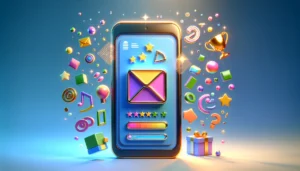
Don’t End Up in the Spam Folder: 10 Subject Line Mistakes to Avoid
Navigating the treacherous waters of email marketing requires knowing what not to do, especially for crafting that critical subject line. We’ve gathered insights from copywriters and content marketing managers, among others, to pinpoint the top ten subject line missteps that could doom your emails to the spam folder. From avoiding salesy language to skipping dollar signs or mentions of cost, here’s what the experts have to say.
- Leading with Salesy Words
- Utilizing All-Caps Text
- Writing with Spammy Words
- Adding Exclamation Marks
- Using Vague, Irrelevant Language
- Leaving Your Subject Line Incomplete
- Misleading with the “RE” Prefix
- Not Naming the Recipient
- Aggravating with False Urgency
- Including Dollar Signs or Cost
Leading with Salesy Words
Since teaming up with Michelle Paulhus, our E-Commerce & Retention Director (aka guru of all things e-commerce and email), we agreed to ditch the salesy subject lines.
We keep them short, sweet, and just plain fun—sometimes riffing on a joke that pays off in the newsletter, asking a ridiculous question, or something that seems random but sparks curiosity in the email. Keep them fresh, fun, and full of surprises!
Madeline Soules
Copywriter, OLIPOP
Utilizing All-Caps Text
I’ve written thousands of content pieces online since 2011, and one of several things that has helped me stand out from the rest is avoiding capital letters and exclamation marks. I’m guilty of it too. I used to add exclamation marks to look cool.
The same applies to email subject lines as well. People have short attention spans, and when they see capital letters in subject lines, it sure gets them to pay attention, but it also raises red flags. I’ve never opened an email with all-caps subject lines.
Imagine me writing this in all caps or title case with an exclamation mark!
 Shubham Davey
Shubham Davey
SEO Copywriter Growing Blogs Organically, Prachar Max
Writing with Spammy Words
A critical mistake is using spammy words in subject lines. These words can trigger spam filters, causing your emails to be missed by your audience and harming your sender reputation.
Words like “free,” “guarantee,” and “limited-time offer” are common culprits. Steering clear of these terms not only helps your emails reach inboxes but also maintains your brand’s credibility. Crafting engaging yet straightforward subject lines without these triggers is key to successful email deliverability and maintaining a positive relationship with your audience.
 Marco Genaro Palma
Marco Genaro Palma
Content Marketing Manager, PRLab
Adding Exclamation Marks
I know you might be excited to tell us some news, but anything with all caps tends to push emails directly into the spam folder, rendering your excitement null and void. In addition, emails that break through the spam filter with an all-caps subject line receive a reply 30% less often than those that do not.
Tied together is the use of exclamation points. Digital marketers like to create a sense of urgency so users feel the urge to open their emails, but the combination of all caps and exclamation points will send your emails directly to the spam filter.
 Garrett Carlson
Garrett Carlson
Content Marketing Manager, The Loop Marketing
Using Vague, Irrelevant Language
I receive this a lot: “Sorry I missed your email,” says the person who responded three weeks later.
One email subject line mistake that could send an email directly to the spam folder is using vague or irrelevant subject lines, such as “Sorry I missed your email” or “Following Up.” These subject lines may not catch the recipient’s attention and could easily be mistaken for spam, causing the email to be deleted or sent directly to the junk folder.
For me, this is one of the most frustrating email mistakes. Not only does it waste my time and clutter my inbox, but it also shows a lack of professionalism and consideration for others’ time. If a marketer thinks that “Sorry I missed your email” is a suitable subject line, they may not have taken the time to understand their audience and tailor their message accordingly.
If you want to be successful in email marketing, put yourself in your recipient’s shoes. Would you open an email with such a vague and uninteresting subject line? Probably not.
 Eric Eng
Eric Eng
Founder and CEO, Private College Admissions Consultant, AdmissionSight
Leaving Your Subject Line Incomplete
An empty or incomplete subject line may be considered suspicious by spam filters. Sometimes the subject line gets missed, or is sent only half-completed when you’re busy and trying to do multiple things at once.
Always provide a clear and concise subject that reflects the content of your email. I also recommend leaning into automation to help you when it comes to having emails prepared and ready to go, and to always proofread and double-check your email before sending it out.
Aaron Davis, CEO and Co-Founder, Exploration
Misleading with the “RE” Prefix
I was clearing my spam box a couple of weeks ago and noticed at least five email subject lines beginning with “RE.” The sender was probably trying to trick me into thinking this was an ongoing conversation, so I would click on their email.
This triggered my curiosity. Does Gmail’s spam filter automatically filter out email subject lines that start with “RE?”
When I looked at their guidelines, it says that the spam filter will get rid of misleading emails. This means that using “RE” in subject lines shows spam filters that you’re trying to trick the recipient.
 Scott Lieberman
Scott Lieberman
Owner, Touchdown Money
Not Naming the Recipient
One surefire way to get your emails caught by the most basic spam filter is not customizing your subject lines at all. If you have your contact’s name or business name, include them in the email subject to make your emails more unique and look less like spam.
 Justin Silverman
Justin Silverman
Founder and CEO, Merchynt
Aggravating with False Urgency
There’s a long list of words and phrases that will sweep your message into the spam folder before your reader ever gets to view it. These phrases typically have to do with creating false urgency (act now!) or false promises (100% free). Spam filters are imperfect, and sometimes they can bury legitimate offers out of caution, but they reduce the risk of fraud or harm to the reader. So, consider your word choice before you hit send. You don’t want your business to get lumped in with any shady activity.
Even if your email isn’t automatically sorted into spam, your subject line could earn you a one-way ticket out of your reader’s inbox if you’re not careful. With so many people feeling overwhelmed by the sheer volume of messages they receive, a little empathy can go a long way. Instead of writing subject lines that ask your reader to spend or take action, consider how your email can help solve a problem they’re facing. Demonstrating that you understand your audience can make your emails more relevant and less expendable.
 Ashley Laabs
Ashley Laabs
Thought Leadership Coach and LinkedIn Ghostwriter, Composure Digital
Including Dollars Signs or Cost
As an Enterprise SaaS sales rep, I’m well-versed in bypassing spam filters after sending tens of thousands of automated cold emails, and hundreds of personalized cold emails over the past several years.
Google will flag anything that mentions price or cost as going directly to spam. Dollar signs ($$$), “FREE” in capital letters, “Act now,” “Buy Now!!!,” “100% discount,” or anything with excessive punctuation and/or urgency will send you straight to email jail.
How do I know? I’ve A/B tested all the above phrases, and similar variations, in different cadences, from different email domains. And any time I’ve tested any subject line with even a hint of urgency, the open rates are abysmal.
My advice is to keep your subject line low-friction and low-pressure, and relevant to whatever email it is that you’re sending. At one company I worked for, out of all the different subject lines we tested and tried, the best-performing one was “Intro.” Sometimes simplicity is best!
 Adam Purvis
Adam Purvis
Founder, AdamJohnPurvis.com
Submit Your Answer
Would you like to submit an alternate answer to the question, “What is one email subject line mistake that could send an email directly to the spam folder? ”



